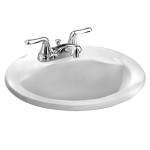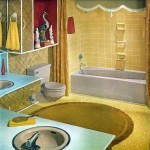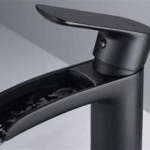Are HVAC Vents Required in Bathrooms? Exploring Ventilation Requirements
The question of whether HVAC (Heating, Ventilation, and Air Conditioning) vents are required in bathrooms is a common one, often arising during home construction, renovation projects, or simply when assessing existing building infrastructure. The answer isn’t a simple yes or no; it depends heavily on building codes, the presence of other ventilation systems, and the specific characteristics of the bathroom in question. Proper bathroom ventilation is crucial for managing moisture, preventing mold growth, and maintaining healthy indoor air quality.
Understanding the factors that influence the need for HVAC vents and alternative ventilation methods is essential for homeowners, builders, and HVAC professionals alike. This article will delve into the various aspects of bathroom ventilation, examining building codes, the role of exhaust fans, and the potential drawbacks of relying solely on HVAC systems for moisture control.
Understanding the Role of Ventilation in Bathrooms
Bathrooms, by their very nature, are environments prone to high humidity levels. Showers, baths, and even handwashing contribute significantly to the moisture content in the air. This elevated humidity can lead to several problems, including the growth of mold and mildew, which can damage building materials, trigger allergies, and compromise indoor air quality. Furthermore, excessive moisture can promote the deterioration of paint, wallpaper, and other surface finishes.
Effective ventilation is the primary means of controlling humidity levels in bathrooms. By removing moist air and replacing it with drier air, ventilation helps to prevent the buildup of condensation on surfaces, inhibiting mold and mildew growth. Adequate ventilation also removes odors and pollutants, contributing to a healthier and more comfortable bathroom environment. The type of ventilation required can vary depending on the size of the bathroom, the frequency of use, and local building codes.
Without proper ventilation, bathrooms can become breeding grounds for harmful microorganisms and can experience structural damage over time. This underscores the importance of addressing ventilation needs during the design and construction phases of any building project.
Examining Building Codes and Ventilation Requirements
Building codes are the primary source of information regarding ventilation requirements for bathrooms. These codes, often based on standards developed by organizations like the International Code Council (ICC), specify the minimum ventilation rates required to ensure adequate air exchange. Local jurisdictions may adopt and amend these codes, so it's essential to consult with the local building department to determine the specific requirements for a given area.
Most building codes require some form of mechanical ventilation in bathrooms that lack operable windows. Mechanical ventilation typically comes in the form of an exhaust fan that vents to the outside. The exhaust fan must meet minimum airflow requirements, typically measured in cubic feet per minute (CFM). The required CFM is often determined based on the size of the bathroom. For example, a bathroom smaller than 50 square feet might require a fan with a minimum airflow of 50 CFM, while larger bathrooms may require higher CFM ratings.
While some argue that HVAC vents can fulfill the ventilation requirements, building codes generally prioritize local exhaust ventilation. This is because HVAC systems are designed to heat or cool the entire house, not specifically to address the high humidity levels generated in bathrooms. Relying solely on an HVAC system may not provide the localized, targeted ventilation needed to effectively remove moisture from the bathroom environment.
In situations where a bathroom has an operable window that meets certain size and location requirements, the window may be considered a substitute for mechanical ventilation. However, even with an operable window, an exhaust fan is often recommended, especially in climates with high humidity or in bathrooms that are frequently used.
HVAC Vents vs. Exhaust Fans: A Comparison
While HVAC systems can contribute to overall airflow within a home, they are not designed to serve as the primary means of bathroom ventilation. HVAC vents typically supply conditioned air (heated or cooled) to maintain a comfortable temperature. They do not actively exhaust moist air from the bathroom.
Exhaust fans, on the other hand, are specifically designed for this purpose. They draw air from the bathroom and vent it to the outside, effectively removing moisture, odors, and pollutants. This targeted ventilation is crucial for preventing mold growth and maintaining healthy indoor air quality.
One key difference between HVAC vents and exhaust fans is their location. HVAC vents are typically located near the floor or ceiling to distribute conditioned air evenly throughout the room. Exhaust fans, however, are typically located near the ceiling, where moisture and warm air tend to accumulate. This strategic placement allows exhaust fans to efficiently remove moist air before it has a chance to condense on surfaces.
Another important consideration is the control mechanism. HVAC systems are typically controlled by a thermostat that regulates the temperature of the entire house. Exhaust fans, on the other hand, can be operated independently, allowing users to activate them only when needed, such as during and after showering. This localized control ensures that ventilation is provided only when it is necessary, conserving energy and preventing excessive cooling or heating of the bathroom.
In summary, while HVAC vents play a role in maintaining overall air circulation and temperature control, exhaust fans provide the localized, targeted ventilation necessary to effectively manage moisture and prevent mold growth in bathrooms. Building codes typically prioritize exhaust fans as the primary means of bathroom ventilation.
Potential Drawbacks of Relying Solely on HVAC Vents for Bathroom Ventilation
Relying solely on HVAC vents for bathroom ventilation presents several potential drawbacks. As previously stated, HVAC systems are designed to heat or cool the entire house, not specifically to address the high humidity levels generated in bathrooms. This can lead to inadequate moisture removal and an increased risk of mold growth.
Another drawback is the potential for increased energy consumption. If the HVAC system is constantly running to try to remove moisture from the bathroom, it can lead to higher energy bills. This is especially true in climates with high humidity, where the HVAC system may struggle to keep up with the moisture load.
Furthermore, relying solely on HVAC vents can lead to uneven temperature distribution throughout the house. If the system is focused on removing moisture from the bathroom, it may neglect other areas of the house, resulting in temperature imbalances. This can compromise comfort and increase energy consumption.
Finally, HVAC systems are not designed to remove odors and pollutants as effectively as exhaust fans. While the system may filter the air to some extent, it is not specifically designed to remove the strong odors and pollutants that can accumulate in bathrooms. This can lead to an unpleasant and unhealthy bathroom environment.
Therefore, while HVAC systems can contribute to overall air circulation, they should not be relied upon as the sole means of bathroom ventilation. Exhaust fans provide a more effective and targeted solution for managing moisture, removing odors, and preventing mold growth.
Alternatives and Supplementary Ventilation Methods
While exhaust fans are the most common and generally required form of bathroom ventilation, other methods can supplement or, in certain circumstances, replace them. These alternatives include operable windows, heat recovery ventilators (HRVs), and energy recovery ventilators (ERVs).
Operable windows, as previously mentioned, can serve as a substitute for mechanical ventilation if they meet certain size and location requirements. However, windows are not always practical or effective, especially in climates with high humidity or during periods of extreme weather. Furthermore, windows may not be adequate for removing odors and pollutants.
Heat recovery ventilators (HRVs) and energy recovery ventilators (ERVs) are whole-house ventilation systems that exchange stale indoor air with fresh outdoor air. HRVs primarily focus on recovering heat from the exhaust air, while ERVs also recover moisture. These systems can improve indoor air quality and reduce energy consumption by preheating or precooling the incoming air. While HRVs and ERVs can contribute to bathroom ventilation, they are not typically a substitute for localized exhaust ventilation in bathrooms with high moisture loads.
Another supplementary method is the use of dehumidifiers. Dehumidifiers remove moisture from the air and can be particularly helpful in bathrooms with persistent humidity issues. However, dehumidifiers require regular maintenance and can consume significant amounts of energy.
The best approach to bathroom ventilation often involves a combination of methods. An exhaust fan, possibly supplemented by an operable window or a whole-house ventilation system, can provide the most effective and comprehensive solution for managing moisture, removing odors, and maintaining healthy indoor air quality.
Conclusion: Adequacy Requires Context
Determining whether HVAC vents alone are sufficient for bathroom ventilation requires a careful assessment of building codes, the presence of alternative ventilation systems, and the specific characteristics of the bathroom. While HVAC systems can contribute to overall air circulation and temperature control, they are not designed to serve as the primary means of bathroom ventilation. Exhaust fans provide localized, targeted ventilation that is crucial for managing moisture, preventing mold growth, and maintaining healthy indoor air quality. Building codes typically prioritize exhaust fans as the primary means of bathroom ventilation, and relying solely on HVAC vents can lead to inadequate moisture removal, increased energy consumption, and uneven temperature distribution. Therefore, a comprehensive approach to bathroom ventilation often involves a combination of methods, including exhaust fans, operable windows, and whole-house ventilation systems.

Does Your Bathroom Need An Exhaust Fan Mr Rooter
Bathroom Exhaust Fans Building America Solution Center

Is Hvac Supply Needed In Bathroom Lowe S Cleaning

Inline Exhaust Fans How To Use Them Vent Multiple Bathrooms

Bathroom Ventilation Requirements Air Cool Contractors

Where Do Bathroom Vents Go And How Are They Routed Angi

Supply And Exhaust Ventilation In A Surprising Place Energy Vanguard

Ways To Improve Your Bathroom Ventilation

Bathroom Vent Close To Ac Register Causing Condensation Greenbuildingadvisor

How To Vent A Bathroom With No Outside Access
Related Posts







